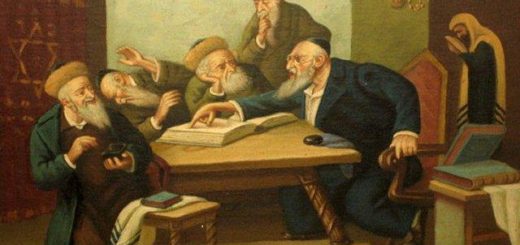Vizos Habracha – Four Fundamental Letters

The Torah begins with an act of kindness, Rabi Simlai points out – Hashem’s providing clothing to Adam and Chava; and ends with an act of kindness – the burial of Moshe Rabbeinu (Sotah, 14a).
Another “beginning and end” aspect of the Torah is noted by the Chasam Sofer. The very last word in the Torah, “Yisrael,” shares four letters with the very first one, “Bereishis”: aleph, shin, resh and yud. And those letters spell ashrei.
Ashrei can be translated as “praiseworthy” or “fortunate.” That latter meaning may be the key to the “bridge” connecting the end of the Torah and its beginning, which we seek to connect on Simchas Torah, when we complete the yearly Torah-cycle and begin it anew.
Jews are called Yehudim because of Leah’s statement when she named Yehudah, that Hashem had given her “more than her share” of sons. We are defined by a declaration that what we have is a gift, one we haven’t earned and about which we must feel fortunate.
And rain first fell, allowing the already-created vegetation to sprout, only after Adam was created and was able to “recognize the good of rain and pray for it” (Rashi, Beraishis, 2:5). He had to express how fortunate he would be to merit the rain and the ensuing growth.
Recognizing the good that Hashem bestows upon us is central to Judaism. And, perhaps, that is what is hinted at in the letters of the word ashrei that appear at the end and beginning of the Torah.
And, indeed, from the beginning of our day – Modeh Ani – until its end – Hamapil – we are to express that recognition. And birchos hanehenin throughout the day. And Asher Yatzar, a brachah for our medically advanced time (the more we know, the more thankful we must be).
Our recognition of how truly fortunate we are – to have been granted existence and the opportunity to play a role in the Divine plan, to daily receive Hashem’s gifts of life and sustenance, to be part of Klal Yisrael – should inform every Jew’s outlook and attitudes.
And the joy it yields should be front and center of our minds during z’man simchaseinu and Simchas Torah.
© 2023 Rabbi Avi Shafran
My current Ami Magazine column, “Model Lesson,” can be read here.
And an old Sukkos-themed piece that might be of interest is here.
Chag kasher visamei’ach!



Recent Comments